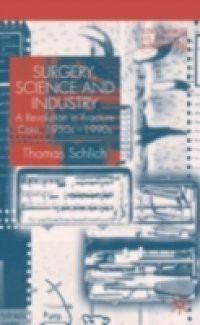This book charts the history of the worldwide introduction of an operative treatment method for broken bones, osteosynthesis, by a Swiss-based association, called AO. In close cooperation surgeons, scientists and manufacturers succeeded in establishing the complicated and risky technique as standard treatment. This success story provides the opportunity to examine key developments at the crossroads of medicine, science and industry in the second half of the twentieth century, such as the relationships between clinic and laboratory, statistics and risk assessment as well as the ethical problems arising from the symbiosis of science and industry. The study shows how the spread of new medical techniques depends on simultaneous adoption of the necessary knowledge and skills among practitioners and its acceptance by patients, and analyzes the impact of cultural variety on these processes. It thus sheds light on the nature of modern medicine as a science-based, standardized and highly efficient way of treating bodily ills.

